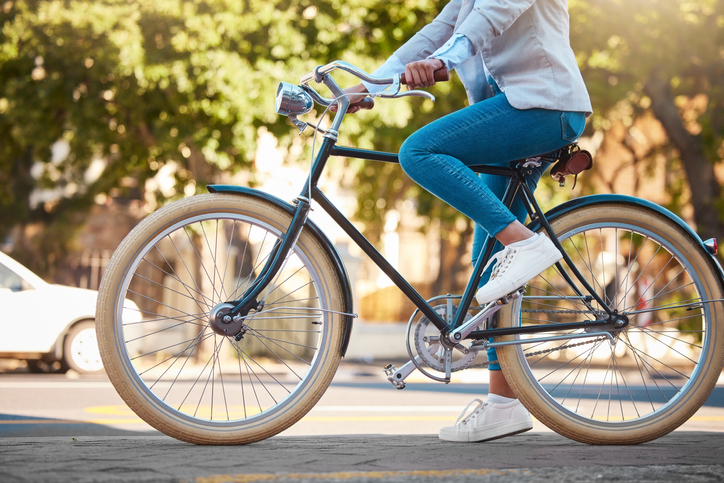California dedicates an entire section of its vehicle code to bicycles. Some of these laws restrict what cyclists can and can’t do. Others recognize the rights bicyclists have with respect to motorists. Still others grant jurisdiction to cities and counties to pass local bicycle ordinances.
Violating these laws has consequences. The police can cite you if you break them, and if you or someone else gets hurt in the process, you may bear some or all the liability for any injuries you suffer.
Bicycles in California
California’s vehicle code defines a bicycle as a conveyance propelled by human power in combination with a belt, chain, or gears. Bicycles don’t include vehicles powered by animals or engines.
Bicycles encompass all conveyances with more than one wheel. Thus, bicycles in California include:
Bicycle owners don’t need to register or insure their conveyances. Furthermore, bikes don’t need license plates, and cyclists don’t need driver’s licenses.
10 California Bicycle Laws
Article four of California’s vehicle code covers the operation of bicycles. This article includes 18 laws that specifically cover bicycles and cyclists.
But bicycle laws appear elsewhere in the California code. The state also allows local governments, like cities and counties, to pass ordinances affecting bike riders.
Here are 10 of the most important bike laws in California.
1. E-Bikes Are Bikes
California considers e-bikes to be no different from regular bikes.
E-bikes use a battery and electric motor to propel the bicycle. Although the definition of “bicycle” refers to human propulsion, California amended its law to give e-bike riders the same rights and responsibilities as riders of conventional bikes.
California makes one exception to this broad definition. The law divides e-bikes into three classifications:
- Class I e-bikes have a motor that assists the rider in pedaling up to 20 miles per hour before disengaging
- Class II e-bikes have a motor that propels the rider without pedaling up to 20 miles per hour before disengaging
- Class III e-bikes have a speedometer and a motor that doesn’t disengage until reaching 28 miles per hour
Class I and II e-bikes fall fully under the state’s bike laws, while Class III e-bikes fall between bicycles and mopeds. Riders must be at least 16 years old and wear a helmet to ride a Class III e-bike.
2. Mopeds Aren’t Bikes
Despite having pedals, mopeds don’t fall under the definition of a bicycle. Mopeds use an engine and transmission to propel or assist the rider. This makes them closer to motorcycles than bicycles.
California moped riders must:
- Be at least 16 years old
- Have a motorcycle license
- Wear a helmet
- Register their mopeds
The state also limits how moped riders can use their vehicles. For example, moped riders can use bike lanes but can’t use certain bike trails.
3. Bicyclists Are Equal Road Users
California law explicitly makes bicyclists equal road users with the same rights and restrictions as other road users. This means vehicle drivers must:
- Respect the cyclist’s right to ride on the road in a travel lane
- Yield the right of way at an intersection or driveway to cyclists
- Allow cyclists to cross in marked crosswalks
Unfortunately, most bicycle accidents in California happen when motorists fail to treat cyclists as equal road users.
These accidents often occur when motorists change lanes without looking, pass unsafely, tailgate, and go out of turn at intersections. Because of this law, injured cyclists can pursue negligence claims against drivers who ignore their rights.
4. Bicycles Must Follow Traffic Laws
At the same time, cyclists must follow traffic laws. This means that cyclists who fail to yield to vehicles, speed, or change lanes unsafely have no right to injury compensation since they caused the crash.
5. Bicycles Can Sometimes Use Sidewalks
California allows local jurisdictions to decide when cyclists can use sidewalks. In Los Angeles, cyclists can’t ride on the sidewalk unless it has a posted sign explicitly permitting bikes. San Diego bans all cyclists from riding on the sidewalk, while San Francisco only allows cyclists under 13 to ride on the sidewalks.
6. You Can Get a Bicycle DUI
You can’t ride a bicycle in California while under the influence of drugs or alcohol. The bicycle laws don’t specify a legal limit for riding a bike; rather, police officers must see you do something that shows impaired riding ability. If you get cited for cycling under the influence, the state can suspend your driver’s license for up to one year.
7. You Must Report Some Bicycle Accidents
Under California law, all road users, including cyclists, must stop after an accident. The state can charge you with a hit-and-run if you fail to stop. This requirement applies whether you hit someone or they hit you.
Thus, you must stop if you hit a car. You must also stop if a car hits you.
Bicyclists must report bike accidents that result in any injury or death to someone else. For example, you must call the police after:
- Hitting another bicyclist
- Striking a pedestrian
- Getting hit by a car that subsequently hits and injures another road user
This same obligation applies to other road users. If you were the victim, the driver of the vehicle that hit you must call the police.
8. Young Riders Must Wear Helmets
Bicyclists under the age of 18 must wear a bike helmet. If a young rider fails to wear a helmet, the police can issue a citation.
9. Bicycles Have Required Equipment
Per California law, bicycles operated at night must have the following:
- A white forward-facing lamp
- A red rear-facing reflector or lamp
- Reflectors on each pedal
- Reflectors on the sides of the frame or wheel spokes
You may also have a headlamp attached to your head instead of the bicycle.
10. California Protects Bikeways
Bikeways like bike lanes and trails are protected under California law. The state restricts when motor vehicles can enter or cross bikeways. It also identifies which vehicles can use bikeways.
Following California’s Bicycle Laws
It’s fairly easy to comply with California’s bicycle laws, as most either mirror the laws you’re already familiar with as a driver or arise from common sense.Compliance means more than avoiding a citation. When you follow California’s bike laws, you reduce your crash risk and ensure that you retain your right to compensation for any injuries you suffer.


